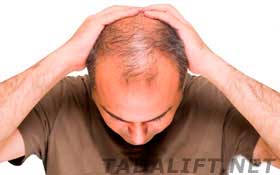The interconnection between the female pattern hair loss and severe lack of Vitamin D has been proven by the Indian scientists in 2016. According to the article published in the International Journal of Trichology, levels of this nutrient in women with alopecia are much lower compared to individuals without such problems.
 Nevertheless, similar studies concerning male baldness couldn’t confirm any connection between the levels of this nutrient and male pattern baldness. Hence, Vitamin D can effectively treat alopecia in women only.
Nevertheless, similar studies concerning male baldness couldn’t confirm any connection between the levels of this nutrient and male pattern baldness. Hence, Vitamin D can effectively treat alopecia in women only.
What is the function of Vitamin D?
Every person needs to get certain amounts of nutrients daily to support the normal functioning of the entire organism. Vitamin D is an important constituent in this process. It is responsible for the bone strength and immunity system. Besides, it takes part in the cell growth, stimulates the existing hair follicles and helps to awaken the resting follicles. Hence, daily administering of Vitamin D supplements may help to better the quality and the thickness of hair.
Where to get Vitamin D
The bulk of Vitamin D is secreted in the human organism under the influence of direct sunlight. Yet, the use of sunscreen and little time spent outdoors don’t let the body get the needed amount of the nutrient. That’s why people should get it from additional sources.
 Eating foods rich in Vitamin D is one of them. It gives people a possibility to get the daily norm of the vitamin and stay healthy. Fatty sorts of fish (e.g. salmon, mackerel) and animal fats are the major sources of this nutrient.
Eating foods rich in Vitamin D is one of them. It gives people a possibility to get the daily norm of the vitamin and stay healthy. Fatty sorts of fish (e.g. salmon, mackerel) and animal fats are the major sources of this nutrient.
Vegetarians and vegans may suffer from the shortage of Vitamin D shortage because of the lack of animal products in their diet. To normalize the levels of this nutrient, they may add to their diet foods artificially enriched with Vitamin D or use vitamin supplements.
No matter what you choose: staying in the sun, healthy nutrition or intake of supplements, the result will be the same good. So, if you want to restore your head of hair, start acting!

